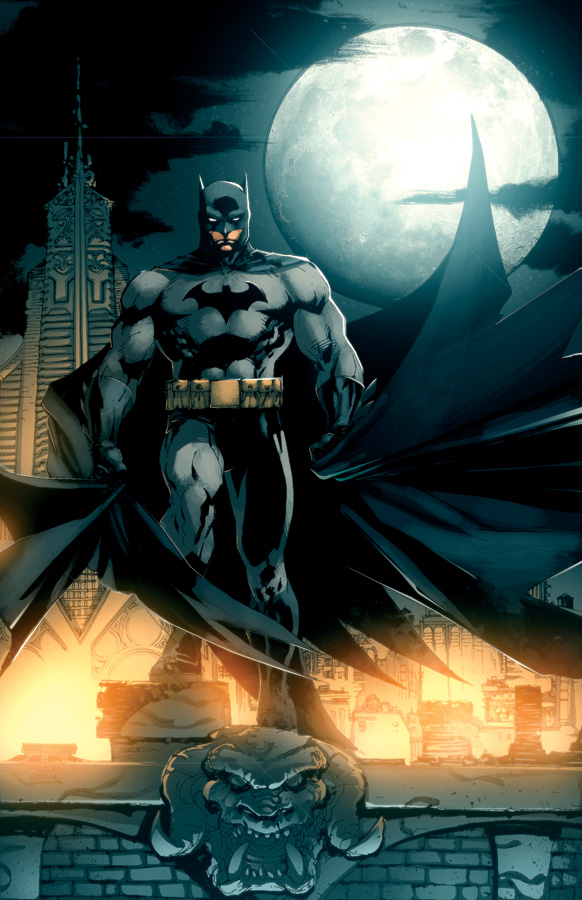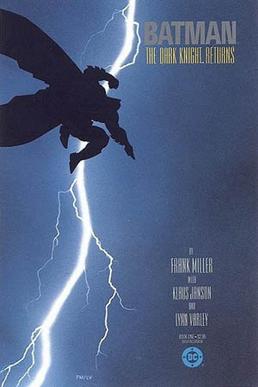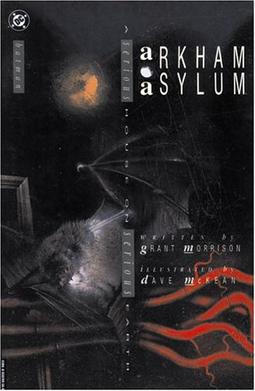Hollywood loves comic books.
This is not surprising: the big comic-book films of the last years – titles
like X-Men: The Last Stand, 300, Spider-Man
3, Iron Man, Wanted, and now The Dark
Knight – have made mountains of cash for the studios. Even a supposed
underperformer like Superman Returns
grossed $391m world-wide and, to absolutely no-one's astonishment, a sequel
(or, rather, the obligatory re-boot) is in the making.
The new films
didn’t just make money; they also won over the dark kingdom of professional
criticism, none more so than Christopher Nolan’s Batman films, Batman Begins (2005) and The Dark Knight (2008). The American
star critic Roger Ebert speaks for many of his peers when he calls The Dark Knight 'a haunted film that… becomes an engrossing tragedy'. Alas, Ebert also claims that '"Batman" isn't a comic book anymore' and that the film 'leaps beyond its
origins'. Wrong, Roger. What Christopher Nolan did – more than previous
Bat director Tim Burton, and in stark contrast to Joel Schumacher, the
perpetrator of Batman Forever and Batman and Robin – was to take the comic
books seriously; he picked up the themes that permeate the Dark Knight’s
universe and translated them to the big screen.
It's pretty much universally acknowledged that Batman is cool. The character is the ultimate adolescent fantasy: a millionaire playboy who spends his nights beating criminals to a pulp with his bare fists. At the same time, he has no superpowers (unlike most of the Justice League) and relies on intelligence and preparedness. But it's not, I think, that he is particularly relatable: Superman's feelings are much more plain, and the Man of Steel, though an alien, has a much more 'normal' family background as a Kansas farmboy. Batman, like his city, is something of an enigma, and it's no surprise that Christian Bale has portrayed him as a closed character, expressive only in the masks he puts on (Bruce Wayne the celebrity businessman, and Batman the crimefighter). His attraction lies, rather, precisely in his total disappearance into the symbol of Batman.
If you
enjoyed the Nolan flicks, you might love the source material, for instance the
classic Batman: The Dark Knight Returns
by Frank Miller (1986). Miller's a funny chap. These days he's a millionaire
after the success of the movie versions of his comics Sin City
and 300. He was also the author of the rumoured Holy Terror, Batman!, a book
of 'propaganda' (quoth Miller, no kidding) in which the Caped Crusader was to battle Osama (a project that has now been scrapped, for reasons that should be somewhat obvious), and of All Star Batman and Robin the Boy Wonder,
which was released to richly deserved universal derision.
In The Dark Knight Returns a fifty-something Bruce Wayne decides he must
don his cape once more, and Batman's return draws back both old
friends and enemies. Returns is a
wonderful exploration of the Batman and what he means both to Gotham
and to Bruce Wayne, but subtlety is not Frank Miller's forte, and many of the writer's later obsessions are present in embryo here. All the same, this bold
vision of a darker Batman has been hugely influential. Miller's own Batman: Year One tells the story of how
Bruce first invented the Batman persona to inspire fear among the criminals preying
on Gotham. Year One is the inspiration for Batman
Begins, and a jolly good comic-book it is; David Mazzucchelli’s grim and
realistic art (contrasting with Miller's own fluid, exaggerated style) complements the writing perfectly.
Another
classic is Batman: The Killing Joke by British comic-book legend and Churchillian historian Alan Moore. Essentially a dark and disturbing story
about the Joker and madness as escape from a maddening reality, The Killing Joke is the comic-book Heath
Ledger read in preparation for his awe-inspiring performance in The Dark Knight. And Ledger certainly
did portray the Joker as the homicidal sociopath Moore outlined – yet I cannot help feeling
that Ledger actually does more with the character, transcending and
excelling the comic-book original. Nevertheless this is the classic Joker story that uncannily makes you pity the villain (though whether that's a good thing I'll leave to you to decide - The Killing Joke is best read as the Joker's creation of multiple pasts, his own identity being supremely unstable).
There are
villains galore in Batman: The Long
Halloween and its follow-up, Batman:
Dark Victory by Jeph Loeb (writing) and Tim Sale (art), an epic crime saga,
murder mystery, and re-telling of Batman's early career in two parts. 'I
believe in Gotham City', are Bruce Wayne’s opening words, and it is in full
Godfather mode that Loeb tells the story of the Falcone crime empire and how
three men – James Gordon, an ambitious District Attorney named Harvey Dent, and
the Batman – try to conquer crime in Gotham. If this sounds a lot like The Dark Knight, that's because Nolan’s
recent blockbuster is obviously inspired by Loeb, including the tragic journey
of Harvey Dent; these two tales are also among the personal favourites of actor
Christian Bale. Dark Victory
introduces the reviled Robin the Boy Wonder, and the character actually manages
to be bearable – testament to Loeb's considerable writing skills. Both books are overloaded with tropes, but that needn't be a bad thing.
Arkham Asylum: A Serious House on Serious Earth is
where virtually all of Batman's enemies are locked up. But one day the inmates
take over the asylum, and they only have one demand: Batman must come and visit
them. Arkham Asylum is a descent into
madness that places Batman’s stay in the institution alongside the story of the
rise and fall of Amadeus Arkham, the founder of the asylum. A 'comic book' that's not particularly funny, Arkham Asylum is a profound
and disturbing exploration of insanity, drawing on sources from Lewis Carroll to Aleister Crowley (the subtitle is drawn from Philip Larkin). Dave McKean’s art deserves special
mention for being terrifyingly weird and taking Grant Morrison’s excellent
writing to a whole new level: in almost every panel dark shadows lurk around characters whose own edges are ill-defined, blending into the enveloping madness.
Note: This is an updated version of an article originally written in 2008, hence the outdated references.



No comments:
Post a Comment